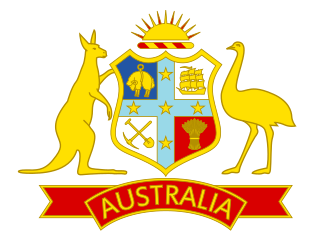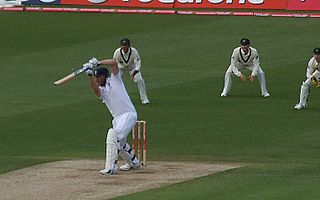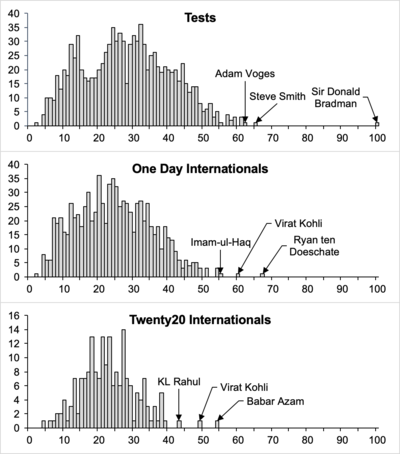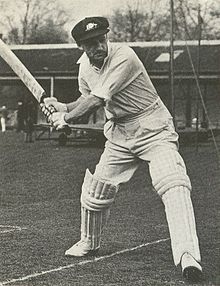
The Australia men's national cricket team represents Australia in men's international cricket. As the joint oldest team in Test cricket history, playing in the first ever Test match in 1877, the team also plays One-Day International (ODI) and Twenty20 International (T20I) cricket, participating in both the first ODI, against England in the 1970–71 season and the first T20I, against New Zealand in the 2004–05 season, winning both games. The team draws its players from teams playing in the Australian domestic competitions – the Sheffield Shield, the Australian domestic limited-overs cricket tournament and the Big Bash League. Australia are the current ICC World Test Championship and ICC Cricket World Cup champions. They are regarded as most successful cricket teams in the history of Cricket.

An all-rounder is a cricketer who regularly performs well at both batting and bowling. Although all bowlers must bat and quite a handful of batsmen do bowl occasionally, most players are skilled in only one of the two disciplines and are considered specialists. Some wicket-keepers have the skills of a specialist batter and have been referred to as all-rounders, but the term wicket-keeper-batter is more commonly applied to them, even if they are substitute wicket keepers who also bowl.
Cricket is a sport that generates a variety of statistics.

Kulasekara Mudiyanselage Dinesh Nuwan Kulasekara is a former Sri Lankan cricketer who played all formats of the game. He was educated at Bandaranayake College Gampaha

Shane Robert Watson is an Australian cricket coach, commentator and former cricketer who played for and occasionally captained the Australian national cricket team between 2002 and 2016. He was an all-rounder who played as a right-handed batsman and a right-arm fast-medium bowler. He was ranked as the world's No. 1 all-rounder in Twenty20 Internationals (T20I) for 150 weeks, including an all-time record of 120 consecutive weeks from 13 October 2011 to 30 January 2014. He began playing during the Australian team's golden era in the early 2000s, and was the last player from this era to retire. In his time playing for Australia, Watson was part of their winning squad in the Cricket World Cup two times in 2007, and 2015 along with the ICC Champions Trophy twice in 2006 and 2009, with Watson named as the player of the match in the final on both occasions, as he scored the winning run in the 2006 tournament, with the winning six in the 2009 tournament.

A partnership is a term used in cricket, that usually refers to the two batters and the runs they score together, including extras. Two batters bat in a partnership, although only one is a striker at any time. The partnership between two batsmen will come to an end when one of them is dismissed or retires, or the innings comes to a close, usually due to victory being achieved, a declaration, a time or over limit being reached, the match being abandoned. In exceptional cases, if one of the original batters are injured, a player may run between the wickets on behalf of the injured batter. However, any runs scored by the injured batter will be recorded as being in the partnership of the two original batters. A partnership may also refer to two bowlers bowling from each end of the wicket.
Strike rate refers to two different statistics in the sport of cricket. Batting strike rate is a measure of how quickly a batter achieves the primary goal of batting, namely scoring runs, measured in runs per 100 balls; higher is better. Bowling strike rate is a measure of how quickly a bowler achieves the primary goal of bowling, namely taking wickets measured in balls per wicket; lower is better. For bowlers, economy rate is a more frequently discussed statistic.
In cricket, the batting order is the sequence in which batters play through their team's innings, there always being two batters taking part at any one time. All eleven players in a team are required to bat if the innings is completed.
In cricket, a duck is a batsman's dismissal with a score of zero. A batsman being dismissed off their first delivery faced is known as a golden duck.

David Andrew Warner is an Australian T20I international cricketer and a former Test vice-captain. A left-handed opening batsman, Warner is the first Australian cricketer in 132 years to be selected for the national team in any format without experience in first-class cricket. He plays for New South Wales and Sydney Thunder in domestic cricket. Warner was a prominent member of the victorious Australian squad of the 2015 Cricket World Cup, the 2021 T20 World Cup, where he was the Player of the Tournament, the 2021–2023 ICC World Test Championship, and the 2023 ICC Cricket World Cup.

Steven Peter Devereux Smith is an Australian international cricketer and former captain of the Australian national team in all three formats of the game. He is widely regarded as one of the greatest Test batsmen since Don Bradman. Smith was a member of the Australian teams that won the 2015 and 2023 Cricket World Cup, the 2021 ICC T20 World Cup, and the 2023 ICC World Test Championship final.
The Ireland cricket team toured India during March 2017 to play five One Day Internationals (ODIs), three Twenty20 International (T20Is) and an ICC Intercontinental Cup match against Afghanistan. All the matches were played at the Greater Noida Sports Complex Ground, Greater Noida, in the state of Uttar Pradesh. Afghanistan won the T20I series 3–0 and the ODI series 3–2. Afghanistan also won the ICC Intercontinental Cup match, by an innings and 172 runs.









